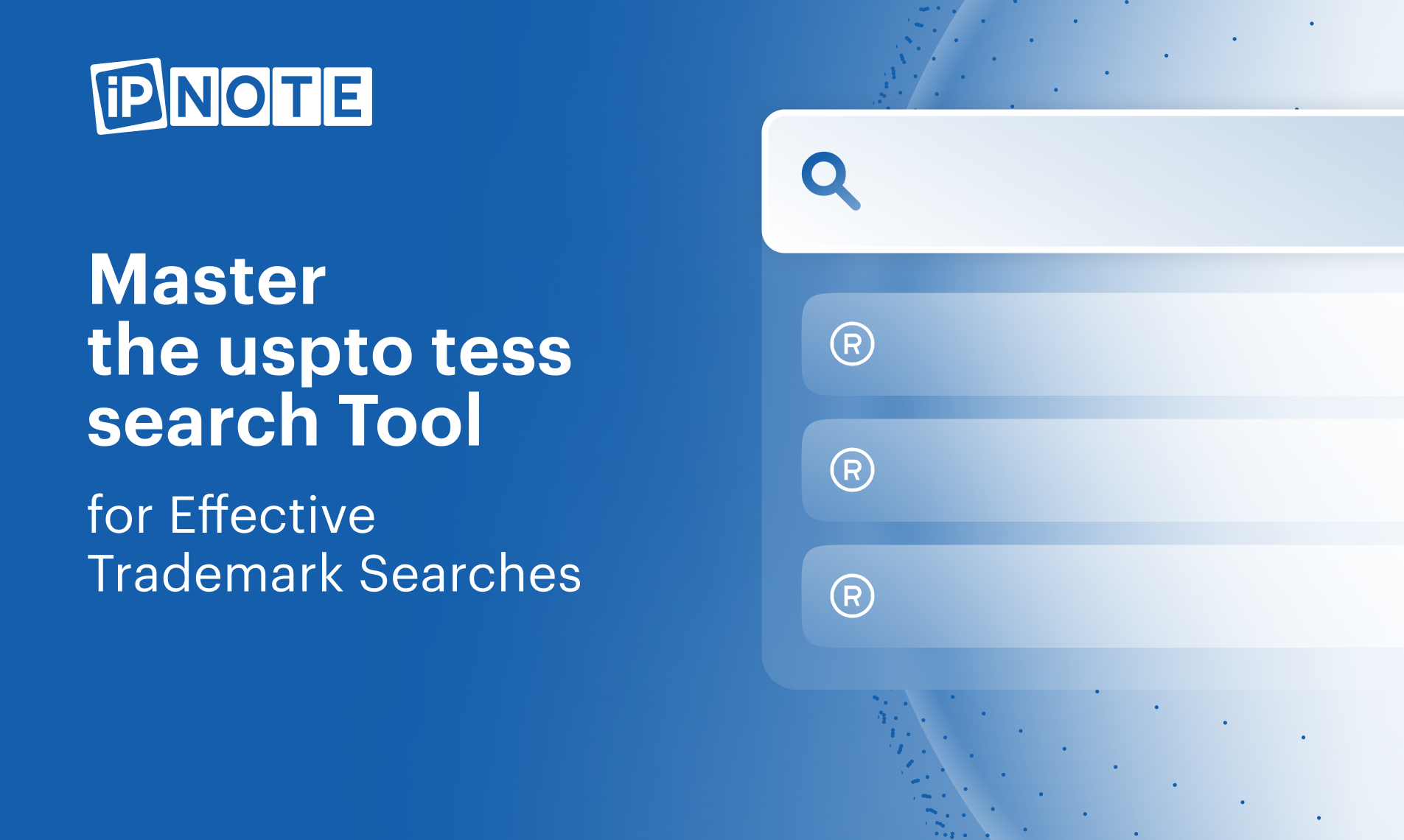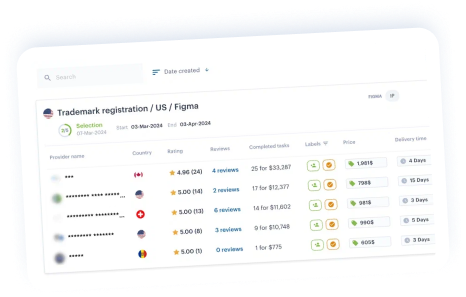Overview
The primary focus of this article is to elucidate the effective utilization of the USPTO TESS search tool for trademark searches. Mastery of this tool is crucial for proficient brand management. It offers a variety of search techniques and troubleshooting tips, enabling users to navigate the system with efficiency. By doing so, individuals can avert brand conflicts and enhance their intellectual property strategies. This knowledge not only empowers users but also positions them to make informed decisions in their brand management endeavors.
Introduction
In the realm of intellectual property, navigating the complexities of trademark management is crucial for businesses aiming to protect their brand identity. The Trademark Electronic Search System (TESS), provided by the United States Patent and Trademark Office, serves as a vital tool for this purpose, enabling users to conduct thorough searches for registered trademarks and pending applications.
As the digital landscape evolves, understanding how to effectively utilize TESS becomes increasingly important, especially with the anticipated transition to a new search system.
This article delves into the intricacies of TESS, offering insights on:
- Accessing the tool
- Employing effective search techniques
- Troubleshooting common issues
These insights are designed to empower corporate IP managers in safeguarding their trademarks in a competitive market.
Understand the USPTO TESS Search Tool
The Trademark Electronic Query System (TESS) is an indispensable online resource provided by the United States Patent and Trademark Office (USPTO), allowing users to conduct a USPTO TESS search for registered trademarks and pending applications. Mastering the uspto tess search is crucial for effective brand management, as it empowers users to navigate its interface and utilize various inquiry methods, including basic word mark searches and advanced structured inquiries tailored to their specific needs. Conducting comprehensive searches is essential to mitigate potential brand conflicts, which can have a profound impact on brand identity and enforcement rights. As the saying goes, ‘A reputable brand is a promise fulfilled,’ underscoring the importance of maintaining a strong brand identity through diligent intellectual property management.
In 2023, the USPTO reported an impressive 95% customer satisfaction rate regarding the application process, showcasing the efficiency of resources dedicated to enhancing brand management. Notably, Class 9, encompassing technology-related marks, accounted for 20% of total filings that year, underscoring the growing importance of thorough brand investigations in a rapidly evolving market.
Starting November 30, 2023, the system will transition to a new brand inquiry platform, making it imperative for users to stay informed about these changes to ensure effective brand management practices. This shift highlights the necessity for corporate IP managers to grasp the intricacies of the tool, as it is vital for the efficient protection of their brands. The Trademark Clearing House (TMCH) serves as a pertinent case study, demonstrating how centralized databases can prevent conflicts with new domain registrations, thereby safeguarding brand rights in the digital realm. Understanding the trademark tool is not merely beneficial; it is essential for corporate IP managers aiming to enhance their trademark management strategies.
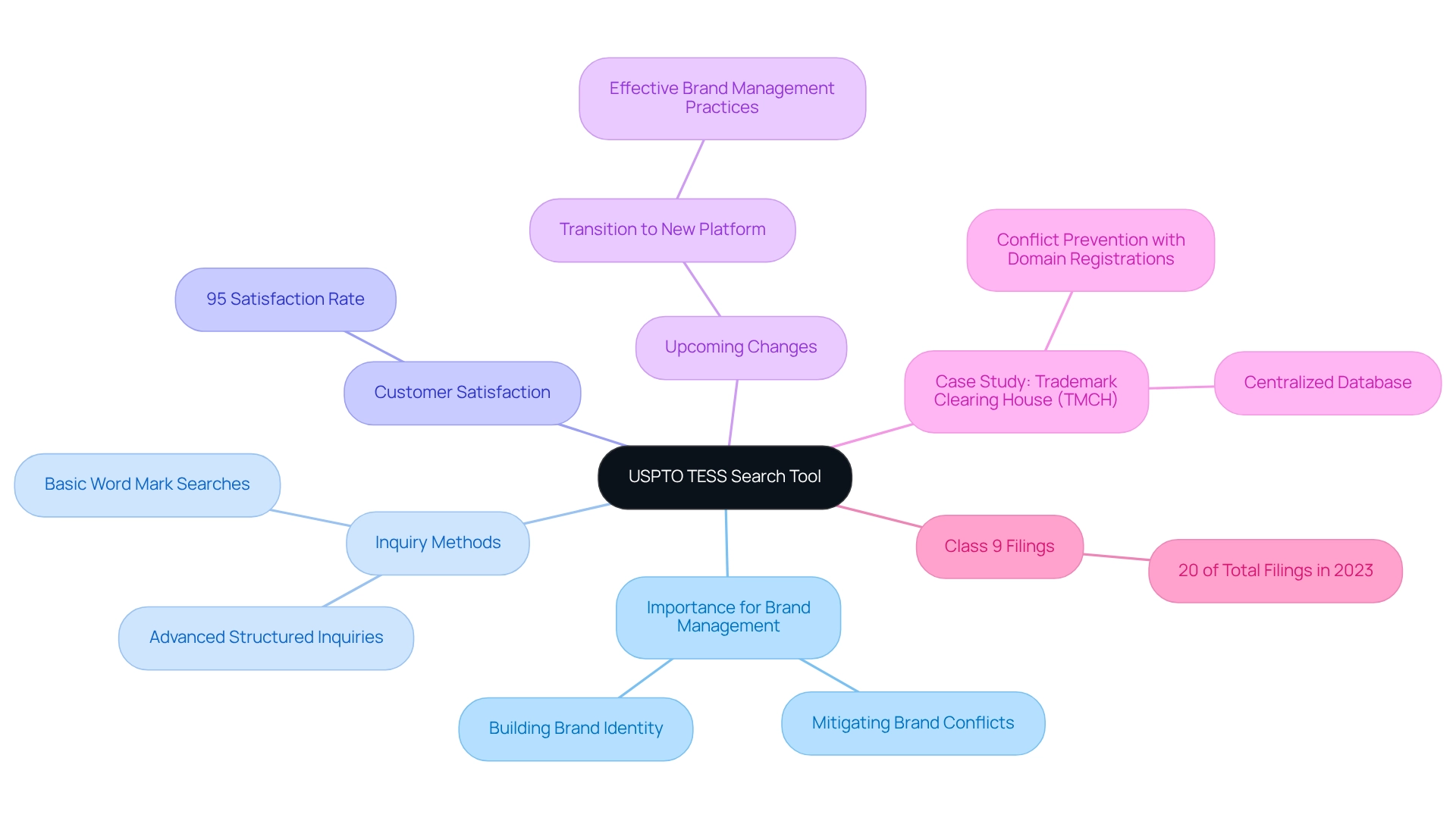
Access the TESS Search Tool
To access the USPTO TESS search tool, visit the USPTO website. While you can use the tool without logging in, creating a USPTO.gov account greatly enhances your experience. An account allows you to store queries and access comprehensive results, simplifying your brand research process. Intellectual property lawyers assert that having a USPTO account not only streamlines the inquiry process but also provides access to additional resources that assist in making informed choices.
To create an account, click on the ‘Sign Up’ link and follow the prompts for identity verification. Once logged in, you can choose from various inquiry options, including Basic Word Mark Inquiry and Advanced Inquiry, enabling you to customize your queries effectively.
In 2025, the number of users utilizing the system is expected to grow, indicating the increasing significance of brand inquiries in the technology industry, which has experienced a 25% surge in applications over the last five years. This trend underscores the necessity for businesses, including Fortune 500 companies, to utilize the system effectively. For instance, major companies such as Samsung, IBM, and Qualcomm employ brand investigations to maintain their competitive advantage in a rapidly changing market, highlighting the practical benefits of the tool in real-world scenarios.
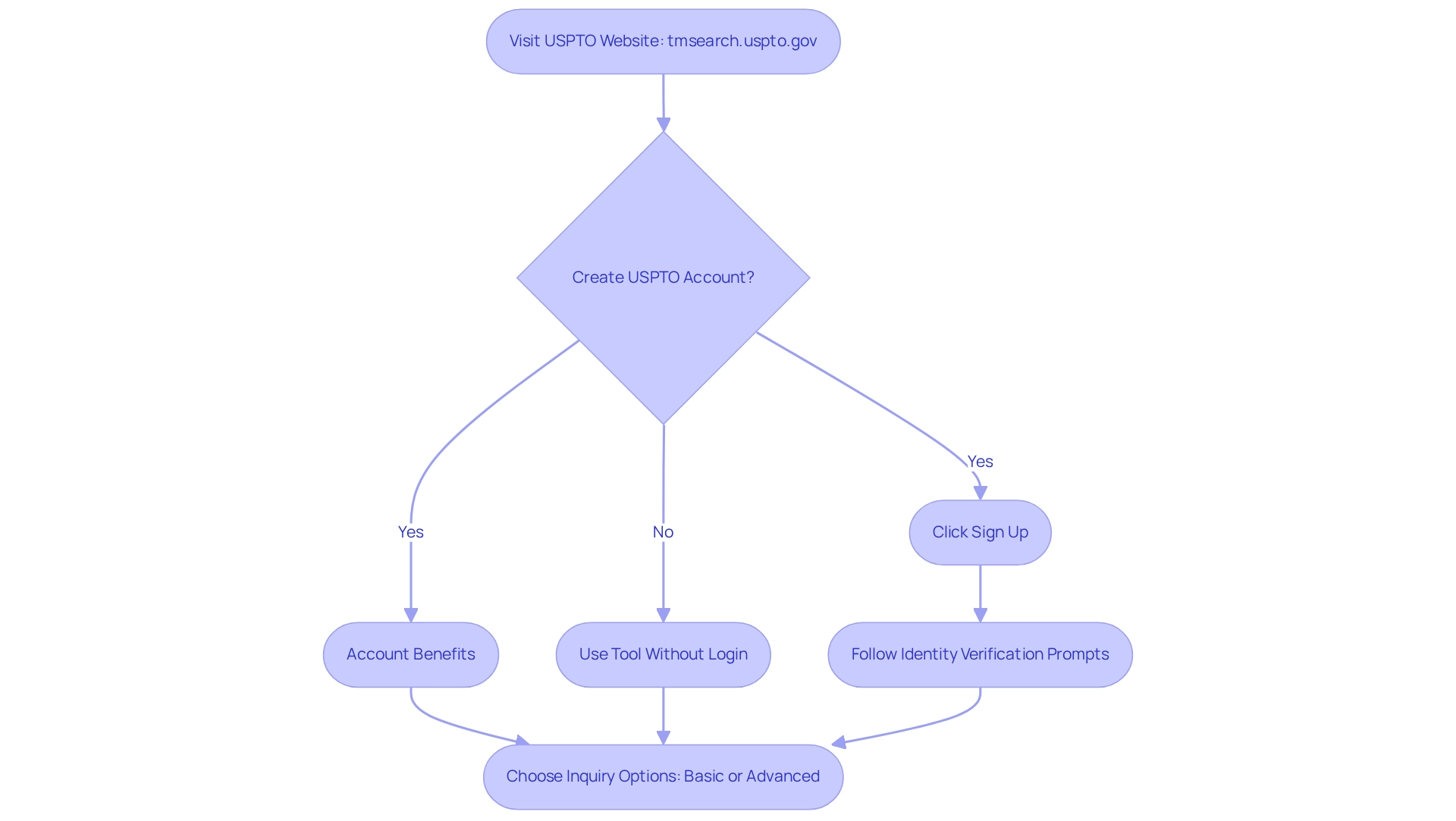
Utilize Effective Search Techniques
To carry out effective inquiries in the USPTO TESS search database, begin by identifying key terms associated with your trademark. Utilize the USPTO TESS search for straightforward queries and consider the following techniques:
- Boolean Operators: Use operators such as AND, OR, and NOT to refine your findings. For instance, searching for ‘coffee AND mug’ will yield results that include both terms, thereby enhancing the accuracy of your search.
- Field Tags: Narrow your inquiry by employing field tags to focus on specific areas, such as owner name or goods/services. For example, ‘owner:Smith’ limits findings to trademarks held by individuals named Smith, streamlining the inquiry process.
- Truncation: Apply the asterisk () to search for variations of a word. An inquiry for ‘market‘ will return results for ‘market’, ‘marketing’, ‘marketplace’, and more, allowing for broader coverage of related terms.
- Query Builder: Leverage the Query Builder feature to create complex queries by selecting specific fields and combining terms. This tool is particularly advantageous for advanced users seeking to conduct comprehensive searches.
- Categories: Conducting brand investigations by groups of products and services is vital for assessing a brand’s potential. For instance, Class 42 pertains to software services, which is an essential consideration for companies in the tech sector when evaluating their trademarks through the USPTO TESS search.
The effectiveness of these methods is underscored by case studies demonstrating how Boolean operators can significantly enhance retrieval efficiency and precision. By refining query inquiries, users can achieve more specific outcomes, ultimately improving the viability assessment of their brands. As the landscape of intellectual property continues to evolve, mastering these advanced inquiry techniques within the system is essential for effective brand management.
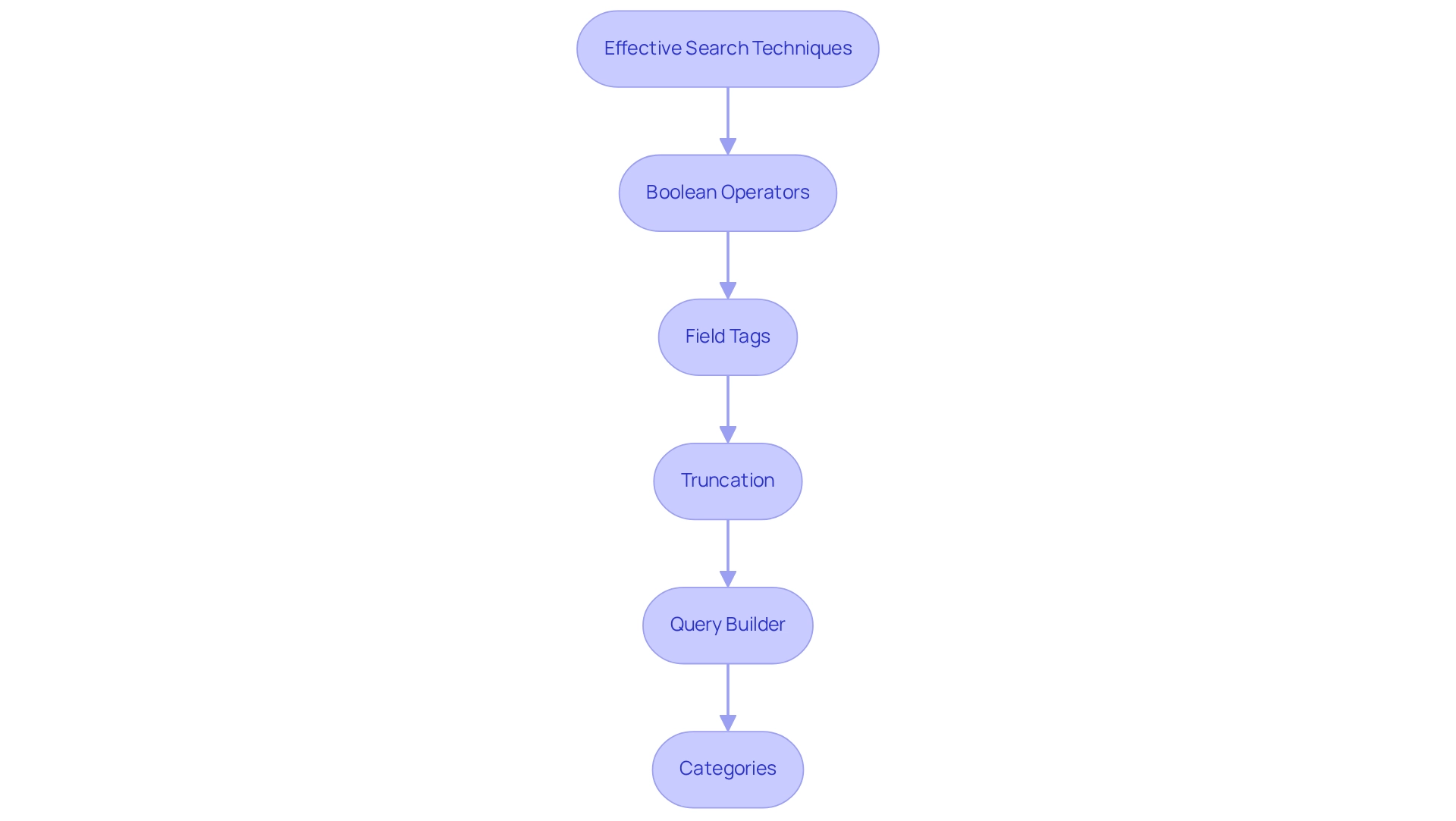
Troubleshoot Common Search Issues
Users of the TESS database frequently encounter various typical problems that can obstruct their trademark exploration experience during a USPTO TESS search. To navigate these challenges effectively, consider the following troubleshooting tips:
- Query Errors: If you receive an error message, verify your terms for typos or incorrect operator usage. Proper capitalization of field tags is crucial, as it can significantly influence your findings. Notably, approximately 15% of users encounter errors due to incorrect term usage.
- No Outcomes Discovered: If your inquiry yields no results, consider expanding your keywords or utilizing synonyms. Removing certain field tags may also help generate broader results, increasing your chances of discovering relevant marks. Rachael Dickson, Senior Trademark Counsel at Lloyd & Mousilli, emphasizes, “This new trademark search tool may seem intimidating, but it can help you learn more about potential obstacles to registration for your mark and about what the landscape of trademarks looks like.”
- Slow Performance: Should the system be sluggish, attempt clearing your browser cache or switching to a different browser. Technical issues often arise from browser compatibility, so experimenting with various options can enhance performance. Users have reported that changing browsers can reduce loading times by up to 30%.
- Access Issues: If you encounter difficulties accessing the TESS site, first check your internet connection. If the issue persists, try accessing the site from another device. For ongoing problems, reaching out to USPTO support can provide additional assistance. Case studies indicate that 20% of access issues are resolved by simply switching devices.
Understanding these typical obstacles and their remedies can streamline your brand identification process, making the USPTO TESS search more efficient and effective. By leveraging the new trademark search tool, users can navigate the complexities of trademark registration with greater ease.

Conclusion
Navigating the complexities of trademark management is essential for businesses aiming to protect their brand identity, and the Trademark Electronic Search System (TESS) plays a pivotal role in this process. By understanding how to access TESS, employing effective search techniques, and troubleshooting common issues, corporate IP managers can significantly enhance their ability to safeguard trademarks in an increasingly competitive market.
The insights presented underscore the importance of staying informed about the transition to a new trademark search system, set to occur in late 2023. This change emphasizes the necessity for businesses to adapt their trademark management strategies, leveraging the latest tools effectively. Utilizing TESS’s capabilities, including Boolean operators and advanced search techniques, enables users to conduct thorough searches that minimize the risk of trademark conflicts.
Ultimately, mastering TESS transcends merely navigating a search tool; it empowers businesses to maintain a robust brand identity and ensures long-term success in the marketplace. As the digital landscape continues to evolve, the ability to effectively manage trademark rights will become increasingly critical for safeguarding brand integrity and fostering growth.
Master Tradeamrk Management with cutting-edge tools. Start now to safeguard your brand identity and navigate the new TESS system effortlessly.
Frequently Asked Questions
What is the Trademark Electronic Query System (TESS)?
TESS is an online resource provided by the United States Patent and Trademark Office (USPTO) that allows users to conduct searches for registered trademarks and pending applications.
Why is mastering the TESS search important?
Mastering the TESS search is crucial for effective brand management, as it enables users to navigate the interface and utilize various inquiry methods to conduct comprehensive searches, helping to mitigate potential brand conflicts.
What are some of the inquiry methods available in TESS?
TESS offers various inquiry methods, including basic word mark searches and advanced structured inquiries tailored to specific needs.
What was the customer satisfaction rate reported by the USPTO in 2023?
The USPTO reported a 95% customer satisfaction rate regarding the application process in 2023.
What percentage of total filings in 2023 did Class 9, which includes technology-related marks, account for?
Class 9 accounted for 20% of total filings in 2023.
What significant change is happening to the TESS system on November 30, 2023?
The TESS system will transition to a new brand inquiry platform on November 30, 2023, making it important for users to stay informed about these changes.
Why is understanding the trademark tool essential for corporate IP managers?
Understanding the trademark tool is essential for corporate IP managers because it is vital for efficiently protecting their brands and enhancing trademark management strategies.
What is the Trademark Clearing House (TMCH) and how does it relate to TESS?
The TMCH is a centralized database that helps prevent conflicts with new domain registrations, thereby safeguarding brand rights in the digital realm, highlighting the importance of trademark tools like TESS in brand management.




